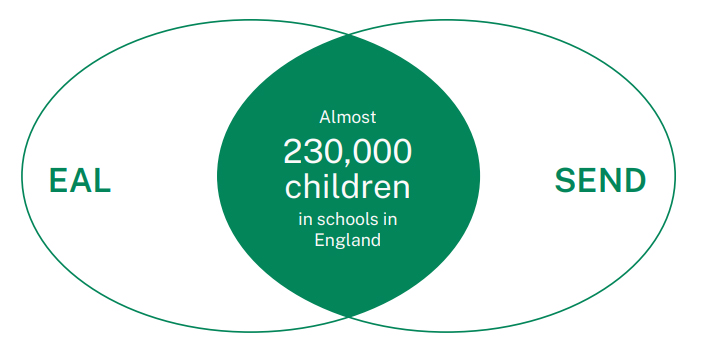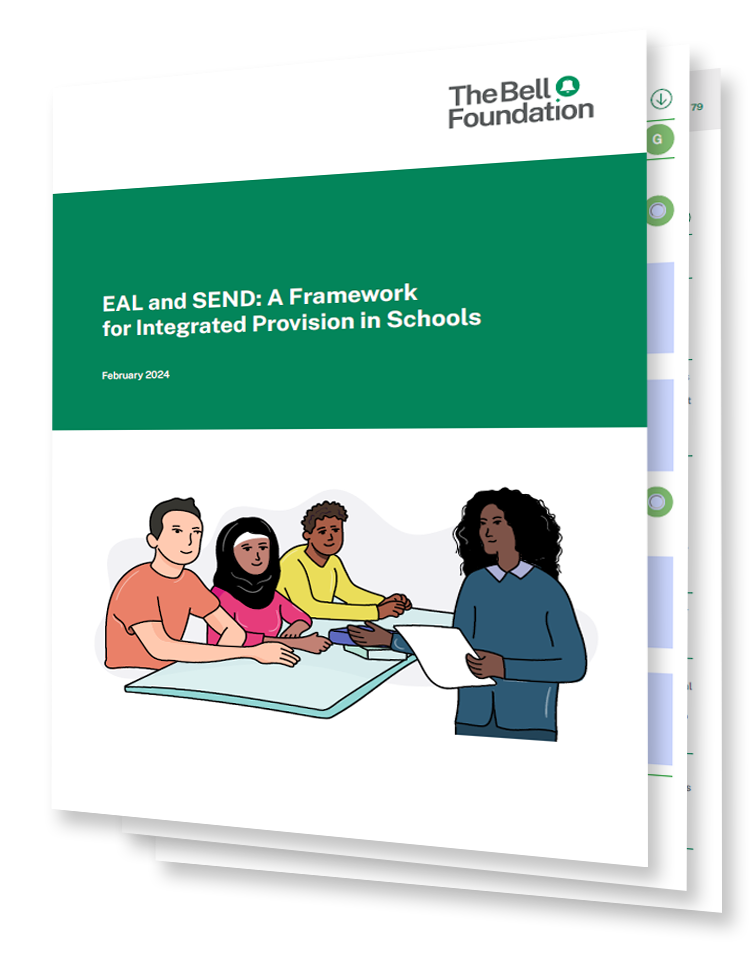Explore our policy recommendations for breaking down language barriers
in schools, adult education, and the criminal justice system.
EAL and SEND: Guidance for Integrated Provision in Schools
This guidance from The Bell Foundation provides a framework for schools to ensure that any EAL learners, who may also have a special educational need or disability (SEND), receive appropriate and effective support.
What's included in this guidance?
![]() Whole-school, EAL, and SEND audit tools;
Whole-school, EAL, and SEND audit tools;
![]() Post-audit action plan;
Post-audit action plan;
![]() Staff observation sheets;
Staff observation sheets;
![]() Planning tools;
Planning tools;
![]() Home/family questionnaires;
Home/family questionnaires;
![]() Case studies.
Case studies.
Is EAL a form of SEND?

Learning EAL is not the same as having a SEND. Depending on their level of proficiency in English, multilingual children who are learning EAL may face linguistic challenges and may need targeted language support, devised by EAL specialists, to help them learn both the language and all their subjects in English.
There are, however, significant numbers of multilingual children who do have SEND. For those children to thrive and reach their potential it is vital that they are identified as early as possible, so they can receive targeted and integrated support that addresses both their linguistic challenges, and their special learning needs.
Who is the guidance for?
 The guidance is aimed at all school staff who are responsible for the provision of support for EAL learners who also have a SEND.
The guidance is aimed at all school staff who are responsible for the provision of support for EAL learners who also have a SEND.
- Senior school leaders can access guidance on creating a whole school approach and tools for auditing what they already have in place and what they might need to introduce.
- EAL Co-ordinators, or those responsible for EAL, can access guidance on collaborating around policy and provision with their school’s inclusion staff, and leading teachers working with multilingual children learning EAL, who have SEND.
- SENDCos can access guidance on leading inclusion staff and collaborating with EAL staff on policy and provision.
The guidance contains case studies of children from early years through to KS4 and a list of organisations and resources for EAL, SEND, and refugee education.
How can schools identify when an EAL learner has a SEND?
There is no single test that schools can administer to learners using EAL, that will reliably indicate the presence of a SEND. Most tests have been designed for fluent English speakers and contain cultural and content biases that create barriers to meaning making, especially for children who are new to the UK and the language.
The measures below will help schools to identify learners using EAL who also may have SEND, and to devise appropriate support:
- Use resources such as interpreters.
- Work closely with learners and their families.
- Build collaboration between EAL and SEND practitioners.
- Use extensive observation and information gathering.
- Arrange referrals to appropriate specialists.
What are the needs of EAL learners who also have SEND?
Teachers can strengthen their practice, to meet the needs of learners using EAL by:
- Carrying out ongoing assessment of language proficiency, including in the learner’s home language, and setting targets for language learning in English.
- Adapting teaching to make content in English accessible.
- Understanding how bilingualism works, so that linguistic challenges are not confused with language and speech special needs.
- Working closely with the SENDCo and pastoral care staff, to identify special needs.
- Placing the learner and their family at the centre of provision planning and responding to the needs they identify.